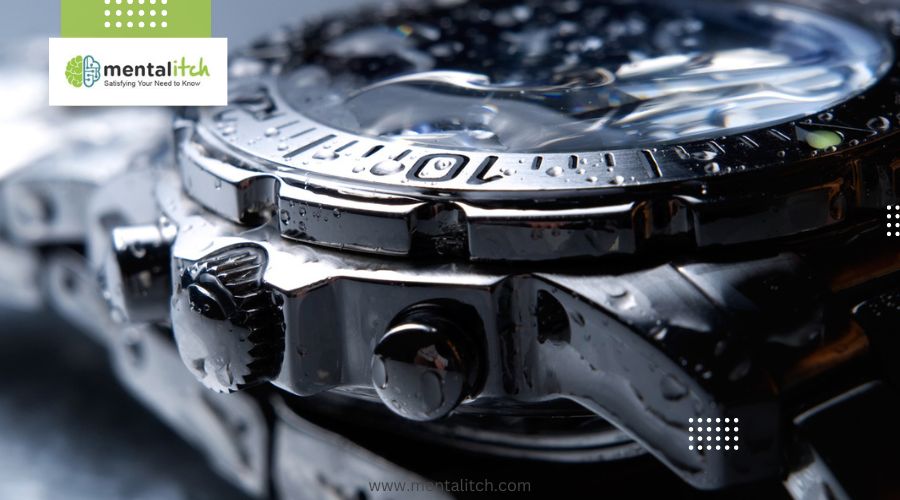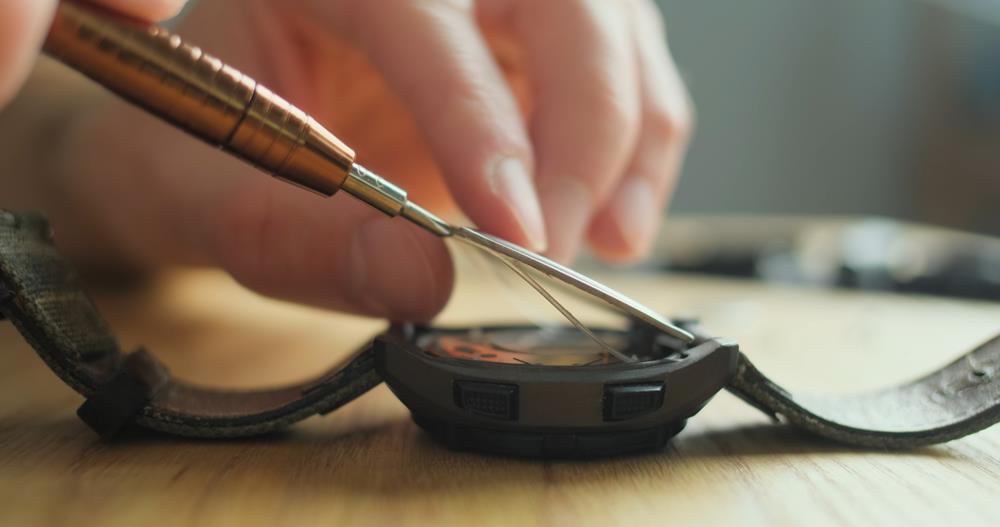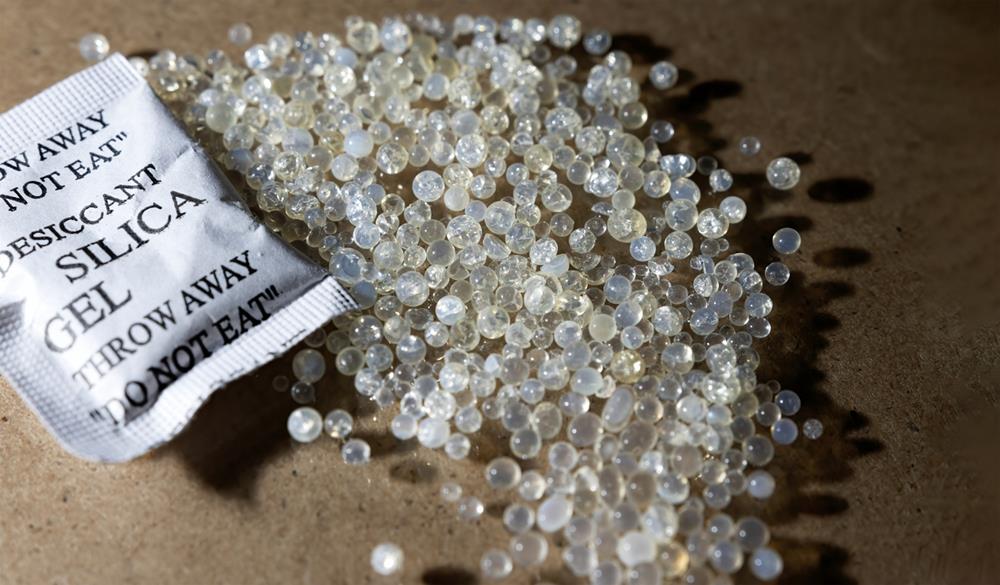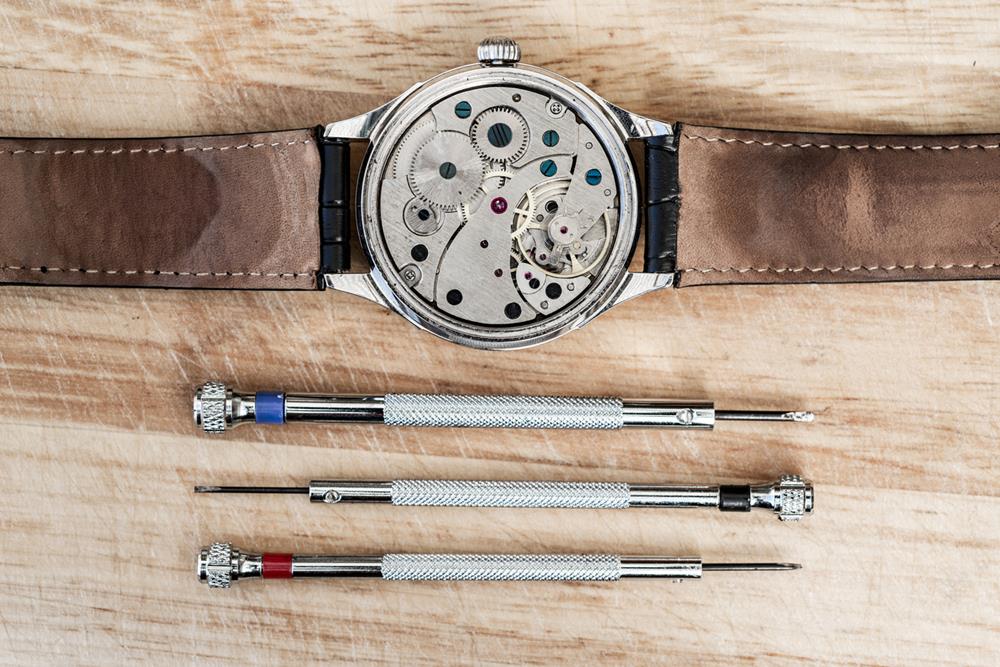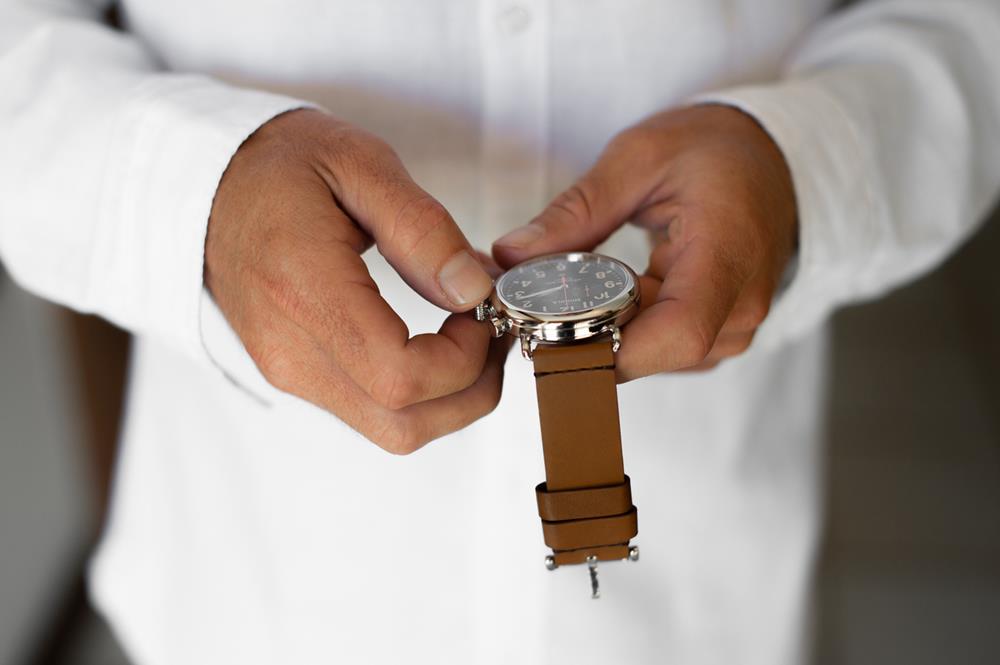Sometimes, watches get wet. It might happen during a rainy day, while washing your hands, or even if you accidentally drop it in water. When this happens, it’s important to act quickly. Water inside a watch can cause a lot of problems, like making the inside parts rusty or stopping the watch from working entirely. In this article, we’ll share five simple tips on how to dry out your watch and help it work well again. It’s all about taking quick and careful steps to protect your watch from water damage.
Tip 1: Remove the Watch Immediately and Wipe It Down
The moment you realize your watch has gotten wet, take it off your wrist right away. The quicker you do this, the less chance there is for water to cause harm. Here’s what you should do next:
- Gently Wipe the Watch: Use a soft, dry cloth to carefully wipe off all the visible water from the watch. If you have a microfiber cloth, that’s even better because it’s gentle and super effective at picking up moisture. Make sure to get the front, back, sides, and even the strap or bracelet.
- Pat Dry: After wiping, gently pat the watch with the cloth to catch any remaining moisture. Be gentle to avoid pushing water further into the watch.
- Avoid Heat: It might be tempting to use a hair dryer or place the watch in direct sunlight to speed up the drying process but don’t. Excessive heat can damage the watch even more. Just stick to wiping it down and let it air dry naturally for a bit.
This step is all about removing as much water as you can from the outside. It’s a crucial first move to prevent more water from seeping inside and causing internal damage.
Tip 2: Remove the Back Case If Possible
After you’ve wiped your watch down, the next step involves dealing with any moisture that might have gotten inside. If your watch design allows it, and you feel confident enough, you can try removing the back case. This step isn’t for every watch or every person, so here’s what to consider:
- Know Your Watch: Some watches are designed to let users easily open the back case, especially mechanical or manual watches. However, for others, especially certain water-resistant models or digital watches, this might not be recommended. Check your watch’s manual or look up the model online to see if it’s advisable.
- Use the Right Tools: If you decide to proceed, make sure you use the correct tools. Watches usually require specific screwdrivers or case openers. Using the wrong tools can scratch or damage your watch.
- Be Gentle: When you open the back case, be very gentle. You’re exposing the internal parts of the watch, so it’s crucial to be careful not to touch or disturb these parts more than necessary.
- Safety First: If at any point you feel unsure or uncomfortable with opening your watch, it’s best to stop and seek professional help. Watchmakers and repair shops have the right tools and expertise to open your watch without damaging it.
Removing the back case can help air out the inside of the watch, speeding up the drying process. However, it’s important to weigh the risks and benefits, considering your watch’s design and your own comfort with the task. Sometimes, it’s best to leave this step to the professionals.
Tip 3: Use Dry Rice or Silica Gel Packets
Once you’ve dealt with the outside of the watch, it’s time to focus on drawing out any moisture that might have gotten inside. A well-known trick for drying out electronics and timepieces is using dry rice or silica gel packets. Here’s how to do it:
- Choose Your Absorbent: Dry rice is a common household item that can absorb moisture well. Silica gel packets, often found in new shoe boxes or with electronic items, are even more effective because they’re designed to keep moisture away.
- Prepare a Container: Find a small, airtight container that can fit your watch comfortably. This will create an environment that’s conducive to drawing out moisture.
- Fill and Place: If you’re using rice, fill the container so that there’s enough rice to surround the watch completely. If you’re using silica gel packets, place several around the watch. You don’t need to cover the watch completely with packets, but make sure they’re close to all sides of the watch.
- Wait It Out: Seal the container and leave your watch inside for at least 24 hours. This gives enough time for the rice or silica gel to absorb the moisture from the watch. If the watch is very wet, you might want to leave it for a bit longer, up to 48 hours.
- Check and Repeat if Necessary: After the waiting period, check your watch for signs of moisture. If it seems dry, you can remove it from the container. If there’s still some moisture, you can try the process again with fresh rice or new silica gel packets.
This method is gentle and doesn’t involve direct heat or manipulation, which makes it a safe option for most watches. However, remember that while it can remove moisture, it may not fix any water damage that has already occurred.
Tip 4: Position the Watch Face Down
After tackling the immediate moisture with absorbents like rice or silica gel, positioning your watch correctly can further aid the drying process. Placing your watch face down is a simple yet effective step. Here’s why and how to do it:
Why Face Down?
- Facilitates Evaporation: Gravity helps moisture inside the watch move towards the openings (like the dial or the back case if slightly ajar), making it easier to evaporate.
- Protects the Face: The watch face is often the most delicate part. Laying the watch face down on a soft surface can prevent scratches or damage while it’s vulnerable.
How to Do It Safely
- Soft Surface: Choose a soft, clean surface to lay your watch on. A microfiber cloth or a soft towel is ideal. This protects the watch face and absorbs any moisture that comes out.
- Ventilated Area: Make sure the area is well-ventilated but not directly in sunlight or near a heat source. A steady flow of room-temperature air helps moisture evaporate without risking heat damage.
- Regular Checks: Check on your watch periodically. If you see any condensation on the inside of the glass or if the watch is not drying as expected, you might need to repeat the drying process with absorbents or consider seeking professional help.
Precautions
- Avoid Direct Sunlight: While sunlight can speed up the drying process, it can also cause overheating and damage the watch components or strap.
- No Forced Air: Avoid using fans or blowers directly on the watch, as this can push moisture deeper into the watch’s mechanisms.
Positioning your watch face down is a passive but effective way to encourage the last bits of moisture to evaporate. Combined with the earlier steps, it significantly improves your chances of drying out your watch safely.
Tip 5: Wait and Test Before Use
Patience is key when it comes to rescuing a wet watch. Even after you’ve followed the steps to dry it out, it’s crucial to wait a bit before you start using it again. Here’s how to approach this final stage:
The Waiting Game
- Give It Time: After completing the drying process, wait another day before using your watch. This extra time ensures any lingering moisture has evaporated, especially from the internal mechanisms.
- Avoid Rushing: Jumping the gun and using your watch too soon can lead to long-term damage if any moisture remains.
Testing the Watch
- Visual Inspection: Before you wind or turn on your watch, inspect it closely. Look for any signs of moisture or condensation under the glass, which could indicate that it’s not fully dry.
- Functionality Check: Gently wind your mechanical watch or set the time on your digital watch. Keep an eye out for any unusual resistance or malfunction, which could signal damage.
- Accuracy Monitoring: Over the next few days, monitor your watch for accuracy. Moisture can affect the movement, so it’s important to ensure it keeps time as expected.
- Water Resistance Test: If your watch is supposed to be water-resistant, consider having it tested by a professional. Opening the case or exposure to water could compromise its resistance.
If Problems Persist
- Seek Professional Help: If your watch isn’t working correctly or shows signs of damage, it’s time to consult a professional watchmaker. They can open the watch, dry and clean the components thoroughly, and repair any damage.
Why This Matters
- Prevents Further Damage: Taking the time to wait and test ensures you’re not putting additional strain on potentially weakened components.
- Saves Money and Heartache: Identifying and addressing any issues early can prevent more serious and costly repairs down the line.
Taking a cautious approach and thoroughly testing your watch after you’ve dried it out can make a significant difference in its recovery. It ensures that your efforts to save your watch have the best chance of success.
Additional Tips
Beyond the core steps to drying out your watch, here are some additional pointers that can help protect your timepiece from future water damage and ensure its longevity.
Precautionary Measures
- Water Resistance Ratings: Understand your watch’s water resistance rating and what it actually means for daily use. Not all watches can withstand swimming or diving, even if they say “water-resistant.”
- Regular Maintenance: Regular servicing can keep your watch in top condition and prevent water damage. A professional can ensure seals and gaskets are intact and replace them if necessary.
- Watch Crown Care: Always make sure the crown (the dial used to set the time) is properly pushed in or screwed down before any exposure to water. A loose crown is a common entry point for moisture.
- Avoid Rapid Temperature Changes: Don’t expose your watch to rapid changes in temperature, such as going from a hot sauna directly into a cold pool. Such extremes can compromise the watch’s seals.
When to Seek Professional Help
- Persistent Moisture: If moisture reappears after you’ve tried drying out your watch, it’s a sign that water may be trapped inside, and professional servicing is needed.
- Mechanical Issues: Any issues with the watch’s movement or function after exposure to water should be assessed by a professional to prevent further damage.
Long-Term Care
- Storage: Store your watch in a dry, temperature-controlled environment to prevent moisture buildup or damage.
- Leather Straps: If your watch has a leather strap, be extra cautious, as leather can absorb water and deteriorate. Consider removing the strap before exposing the watch to water or moisture.
- Water Damage Indicator: Some watches have a water damage indicator. Familiarize yourself with its location and how to check it, as it can provide early warnings of moisture intrusion.
These additional tips complement the core steps to drying out your watch and can help you take better care of your timepiece over time. Being proactive about maintenance and understanding the limits of your watch’s resistance can save you from future headaches and keep your watch ticking smoothly for years to come.
Conclusion
Drying out a wet watch might seem daunting, but with these five tips, you’re well-equipped to handle it. Remember to act quickly, be gentle, and use resources like dry rice or silica gel to draw out moisture. Always be patient and give your watch plenty of time to dry before you start using it again. If you’re ever in doubt, it’s best to consult with a professional to avoid causing more damage. Taking care of your watch properly ensures it will continue to serve you well, keeping time accurately for many years to come.

